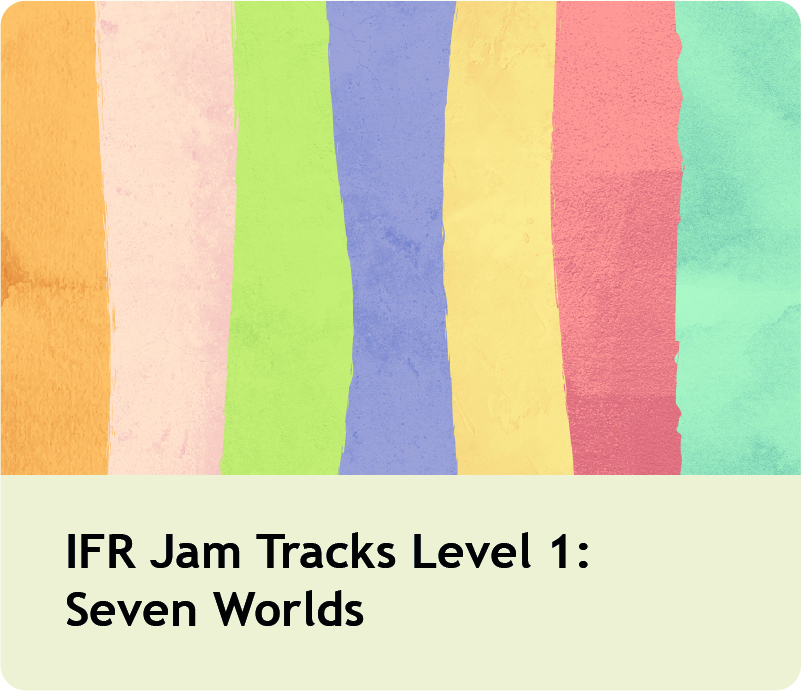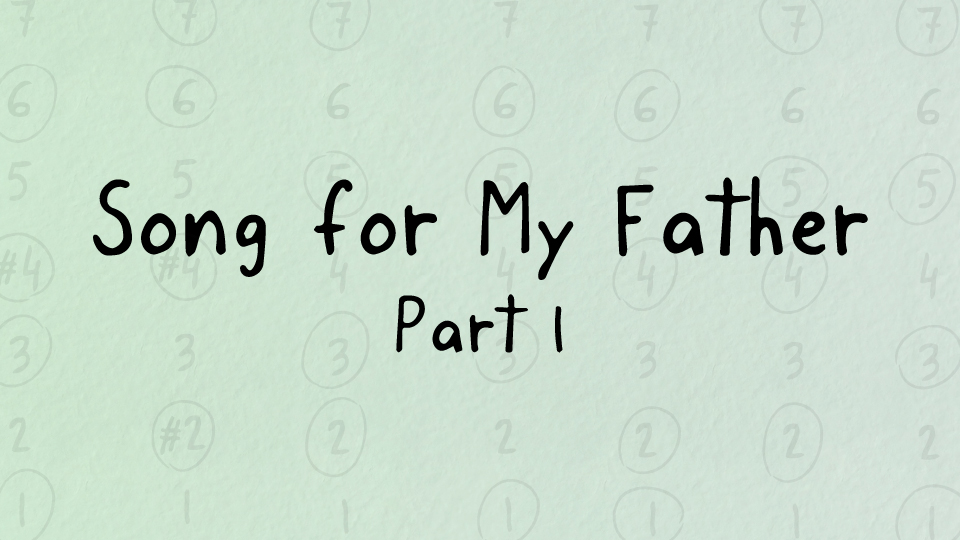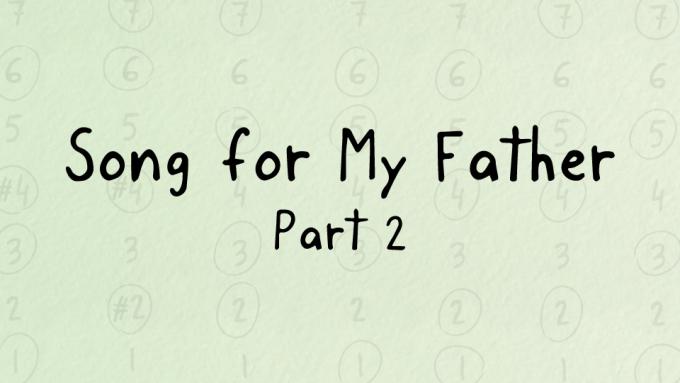Horace Silver's classic "Song for My Father" is one of the most popular tunes played at jam sessions. It's a perfect song for beginning improvisers because the entire song is made from just four chords. In this series we are going to study each of these four chords and understand how each one fits into the overall harmony of the song. And I will show you the exact exercises to practice that will give you confidence creating these sounds. When we are done, you will be able to improvise your own solos over the complete song at jam sessions.
Building the tonal map for "Song for My Father"
We will build our tonal map in the key in which this song is normally played in jam sessions. (If your instrument requires any transposing, don't worry. I'll give you those notes as well.)
In jam sessions this tune is played in the key of Ab for concert key instruments (piano, guitar, bass, violin, viola, cello and flute). Most musicians will call this key "F minor" but it's the Ab major scale which contains these sounds.
Here are the notes that we will be playing:

*Note to trumpet, cornet, clarinet, tenor sax - For you, this song is in the key of Bb. So all you need to do is build your tonal map starting on the note Bb. This leads you to the following notes:
Bb C D Eb F G A Bb
*Note to alto sax and baritone sax - For you, the song is in the key of F. So all you need to do is build your tonal map starting on the note F. This leads you to the following notes:
F G A Bb C D E F
Playing activity #1
For all instruments, I invite you to take a moment to practice improvising freely in this scale all across your entire musical range. Whenever you are ready, you can move on to the next step, where we are going to build the first harmonic environment that appears in "Song for my Father".
The 6- chord
The song opens in what we call the 6- chord (pronounced "six minor chord"). Because note 6 is the root of the chord, let's reorganize our tonal map drawing to place note 6 at the bottom and also at the top. This will help you feel more oriented in what we call the "sixth harmonic environment", which is what we'll use for the next playing activity.

(If this vision of the major scale seems strange to you, remember that your tonal map drawing extends across your entire musical range. So there is nothing preventing you from focusing on any region you like. Right now we're just choosing to focus on a little region that spans from note 6 at the bottom to note 6 at the top.)
Playing activity #2
Practice improvising over this jam track using just the notes that you see in the drawing above. At first you should stay in just this one octave because this will help your ear to feel note 6 as your tonal center. But once you start to feel oriented in the key of the music, feel free to move beyond the octave and improvise with these notes across your entire musical range.
The notes of the 6- chord
Now let's look at the chord notes, and see exactly where each note of the 6- chord falls on our tonal map. The notes of the 6- chord are 6, 1, 3 and 5. Let's circle all of these notes so that we can see them more clearly:

This time I won't include the names of the notes in my drawing, but they are the same names you have been using all along. (From now on I'll just use the tonal numbers to talk about these sounds, so that we don't have to keep using different note names for different instruments. But if you have any doubts about which notes I'm talking about, just go back to the beginning of this article and build the tonal map in the key for your instrument.)
Playing activity #3
In this activity you are going to learn to incorporate the chord notes in your soloing. This is an exercise that will expand and evolve for you over time, so don't feel that it's something you need to master on the first day. But this simple exercise will put you in contact with all of these sounds so that you can start building your own personal mastery of them.
1) Begin by playing the entire scale from note 6 at the bottom to note 6 at the top. Improvise freely with all of these sounds for a few minutes.
2) Now limit yourself to JUST the chord notes. Improvise for a minute with just the notes 6, 1, 3, 5 and 6.
3) Now alternate between steps 1 and 2. Start by improvising for a couple of minutes with just the chord notes to really burn the sensation of the 6- chord into your mind. Then improvise for a few minutes with all of the notes of the scale, enjoying the more subtle shades of color that you find in the non-chord notes.
4) Finally, strive to integrate these two levels of awareness at the same time. Improvise freely with the entire scale as you did in step 1, but now try to maintain your awareness of the chord notes that you explored in step 2. Notice the feeling of relaxation that the chord notes produce, and notice the feeling of tension that the non-chord notes produce. Most importantly, give your full attention to each note you play and notice its particular beauty. These are the sounds of the 6th harmonic environment of the major scale, and they are some of the most important sounds in our musical culture. Take your time to really discover these sounds for yourself.
Congratulations!
In this lesson you have built a great foundation for improvising over "Song for My Father". Here is what we accomplished in this lesson:
1) You learned to build the IFR Tonal Map for "Song for My Father" on your instrument.
2) You explored this key across your entire musical range.
3) You learned to visualize this major scale in one octave with note 6 at the bottom and also at the top. This creates a special attraction to note 6 as the tonal center, and allows you to feel what we call the "sixth harmonic environment" of the major scale.
4) You learned to call out the notes of the 6- chord, which is the first chord in the tune "Song for My Father".
5) Finally, you learned a great exercise for studying these sounds through your own creative improvisations. Simply by alternating between the chord notes and the entire scale, you have everything you need to explore each note in its proper harmonic context. This is where all of your most important discoveries will take place.
 If you want to go deeper into the 6- chord
If you want to go deeper into the 6- chord
If you want to explore the sounds of the 6- chord more deeply, I invite you to use the musical accompaniments that we designed just for this purpose. In IFR Jam Tracks Level 1: Seven Worlds you will find several tracks based in the 6- chord, plus all of the information that you need in order to begin soloing over these tracks right away. Just click on the icon to the right to learn more about this product.
In the next lesson...
In part two of our series on "Song for My Father", we are going to look at the second chord that appears in the tune. It's a different type of chord called a dominant chord and it produces a very different sound. So that's what you'll be soloing over next!
The exciting thing is that all of the remaining chords to this song come from the same tonal framework that you have already built on your instrument. So you already have almost everything you need in order improvise freely over the entire song. All we need to do now is take our time to enjoy getting to know the other three chords of the song, and that's the work that we will begin in our next lesson. Just click on the link below to keep going!

